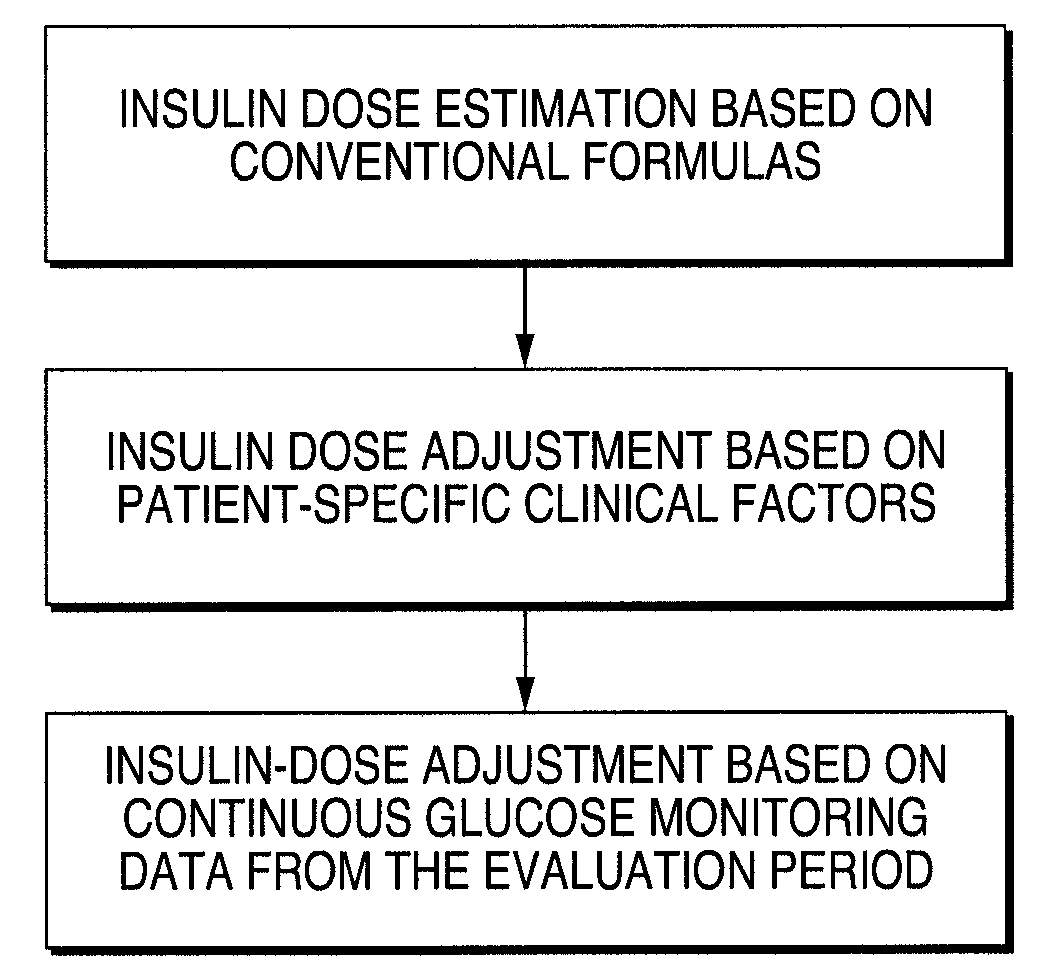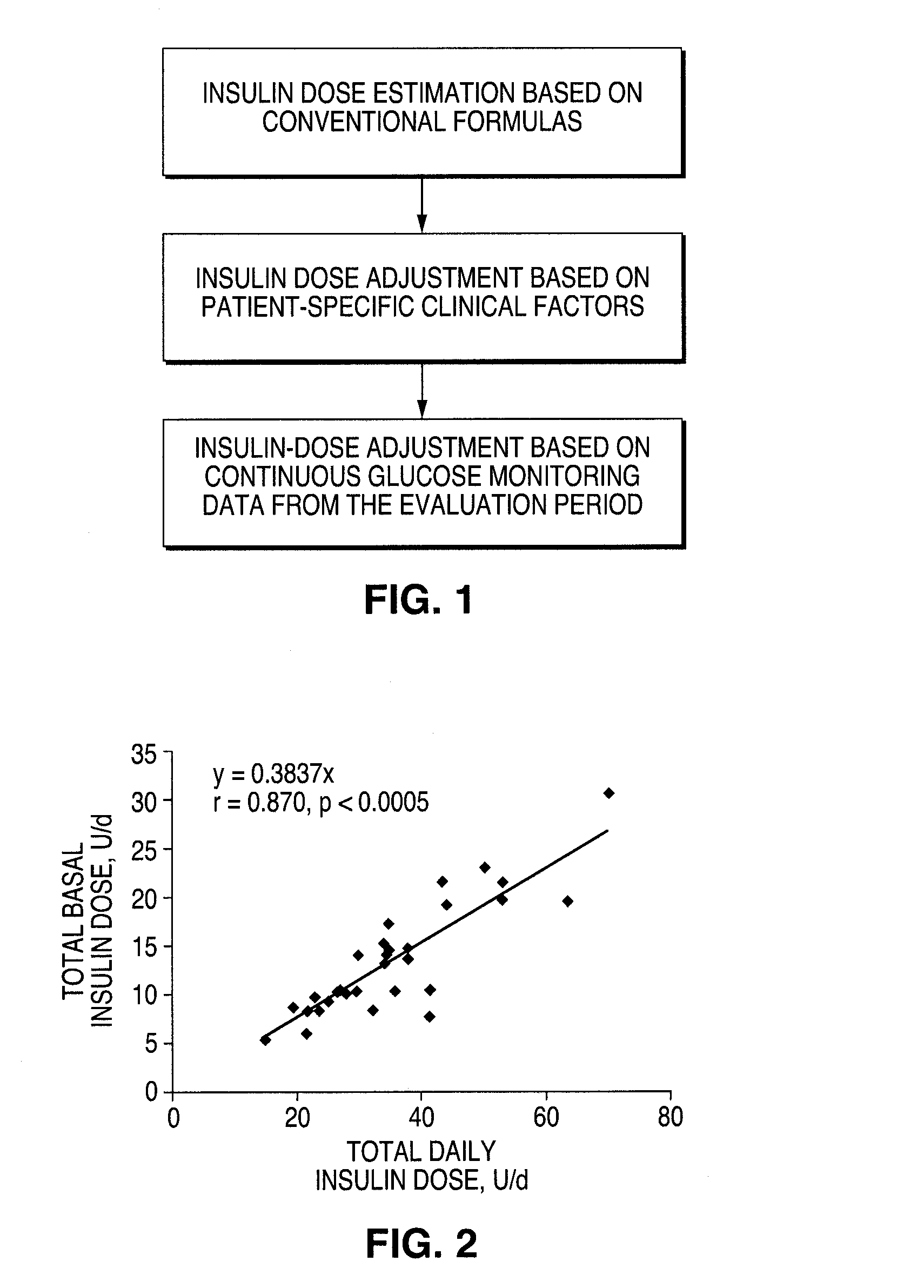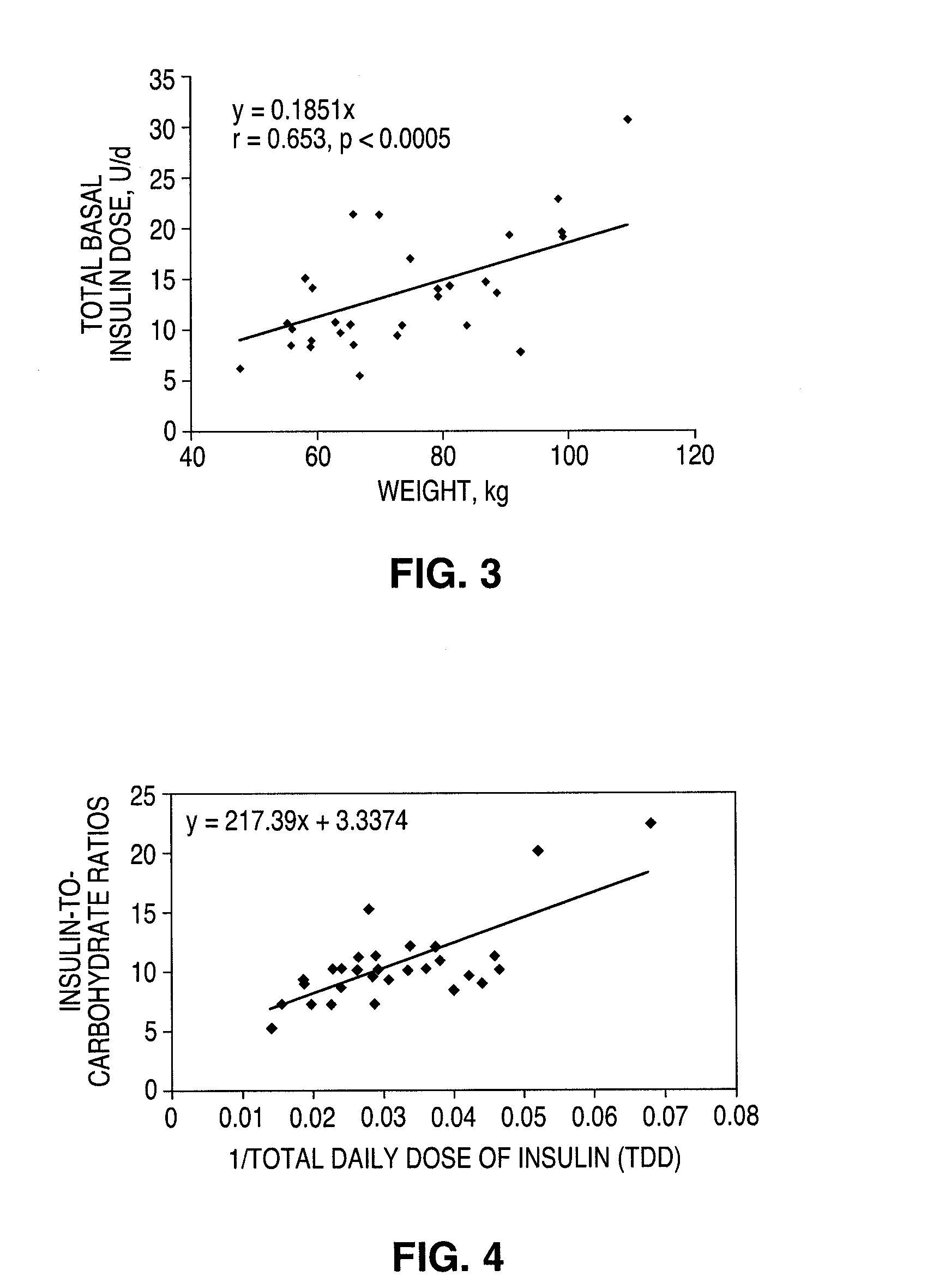Continuous glucose monitoring-directed adjustments in basal insulin rate and insulin bolus dosing formulas
a technology of basal insulin rate and insulin bolus, which is applied in the field of medical methods, can solve the problems of not being clinically satisfactory for the individual patient, and the clinically appropriate insulin dosing in the individual diabetic patient has yet to be satisfactorily achieved
- Summary
- Abstract
- Description
- Claims
- Application Information
AI Technical Summary
Benefits of technology
Problems solved by technology
Method used
Image
Examples
examples
[0113]Examples of the application of the inventive method are now provided in FIGS. 8-11. FIGS. 8 and 9 provide examples of data and analysis per the inventive method from hypothetical patients in which, respectively, basal glucose is too high (FIG. 8) or too low (FIG. 9).
[0114]With reference to FIG. 8, it appears that the patient's basal level of glucose is too high. The analysis begins with the question: “is there a glucose pattern?” A review of the data would note that the pattern is repeated for two days. The elevated glucose depicted in FIG. 8 could be due an inadequate meal insulin bolus or from inadequate insulin basal rate. Omitting this meal will allow the isolated evaluation of an inadequate insulin basal rate. The patient's diary notes should be checked for any other event that may have taken place during this time.
[0115]In FIG. 8, the pattern shows glucose elevated to a peak level of 200 mg / dL during the time period 2300 to 0500 hours. The basal insulin infusion rate can...
PUM
 Login to View More
Login to View More Abstract
Description
Claims
Application Information
 Login to View More
Login to View More - R&D
- Intellectual Property
- Life Sciences
- Materials
- Tech Scout
- Unparalleled Data Quality
- Higher Quality Content
- 60% Fewer Hallucinations
Browse by: Latest US Patents, China's latest patents, Technical Efficacy Thesaurus, Application Domain, Technology Topic, Popular Technical Reports.
© 2025 PatSnap. All rights reserved.Legal|Privacy policy|Modern Slavery Act Transparency Statement|Sitemap|About US| Contact US: help@patsnap.com



